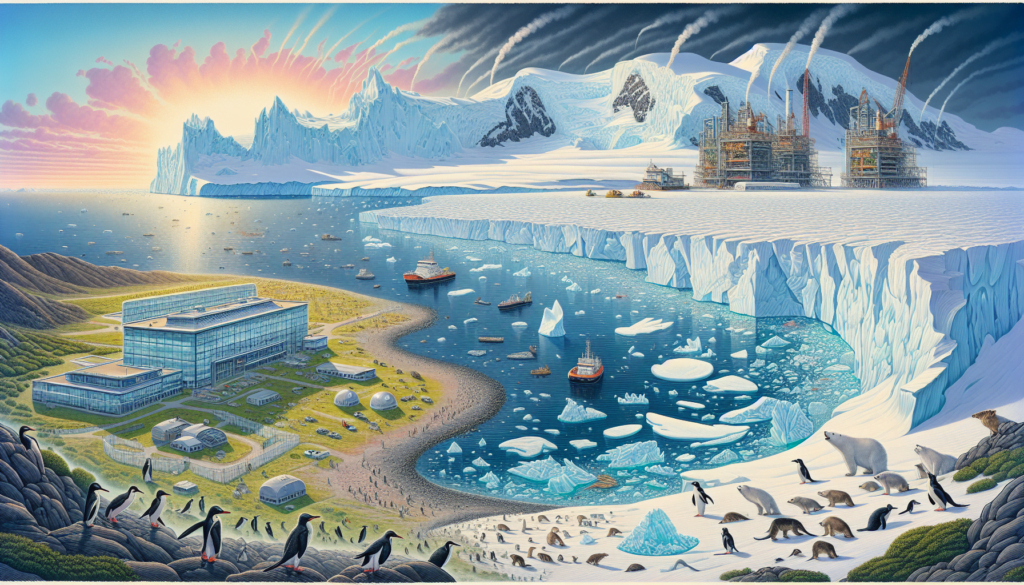Contents
Introduction
Antarctica, the world’s coldest and most remote continent, is increasingly a focal point in discussions about climate change. With its immense ice sheets holding most of the Earth’s freshwater, shifts in this frozen landscape have profound implications for global sea levels and ecosystems. As we look forward to 2040, understanding potential changes in Antarctica’s environment is crucial to globally anticipate and mitigate impacts.
Historical Context of Antarctic Climate Change
Historically, Antarctica has experienced minimal human impact compared to other continents. However, the 20th and 21st centuries have marked a significant departure from this trend. Increasing global temperatures have resulted in measurable ice loss from both the Antarctic ice sheet and surrounding sea ice. Satellite data indicates an accelerated trend in recent decades, emphasizing the urgency of understanding future developments.
Projected Changes by 2040
Ice Sheet Dynamics
By 2040, scientists predict significant changes in Antarctica’s ice dynamics. Models suggest that the Thwaites and Pine Island Glaciers, already experiencing rapid melting, will continue to lose mass. This ongoing ice melt could contribute to a global sea-level rise by more than half a meter, affecting coastal communities worldwide.
Temperature and Precipitation Patterns
Antarctic temperatures are projected to rise more rapidly than the global average. This warming is anticipated to lead to altered precipitation patterns, with an increase in snowfall over the continent. Paradoxically, while some areas might see thickening ice due to higher snowfall levels, the net effect of melting at the edges and warmer temperatures will lead to overall ice mass loss.
Implications for Marine and Terrestrial Ecosystems
Marine Ecosystems
Antarctic marine ecosystems are particularly vulnerable to changes in sea ice cover and temperature. A reduction in sea ice affects krill populations, a cornerstone species for the Antarctic food web, impacting species ranging from penguins to large baleine whales. Additionally, warming waters may facilitate the arrival of invasive species, disrupting the balance of the marine ecosystem.
Terrestrial Ecosystems
Terrestrial life in Antarctica, though sparse, will also face challenges. Increased temperatures and changing snow conditions could alter the habitats of species such as the Emperor and Adelie penguins, potentially leading to population declines if these species cannot adapt to new conditions.
Human Activity and International Policy
Scientific Research and Presence
The role of international research stations is expected to grow as scientists work to monitor and understand changing conditions. Improved technology will enable more detailed and real-time data collection, bolstering global climate models and predictions.
Treaties and Environmental Protection
Antarctica’s governance is defined by international agreements such as the Antarctic Treaty System (ATS). As climate change accelerates, signatory nations will need to strengthen their commitments to preserving the continent’s unique environment. Collaborative efforts on reducing greenhouse gas emissions and protecting vulnerable species will be critical in mitigating further damage.
Conclusion
Antarctica in 2040 will likely be a landscape marked by significant change. While the future holds many uncertainties, the trends point to a continent under continuous environmental stress. Proactive global steps to address climate change and robust international cooperation will be essential to safeguard Antarctica and, by extension, the planet.
This HTML document provides a structured article predicting the state of Antarctica in 2040 amidst ongoing climate change, with various sections covering historical context, projected changes, ecological impacts, and international policy implications, all formatted with clear headings.

